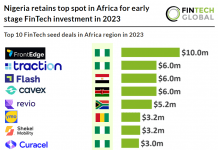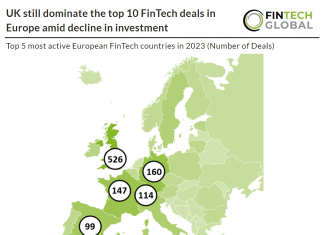Cross-border payments platform Currencycloud recently examined how embedded finance could transform the loan accessing process for SMEs.
The company spoke to Sabih Ali – head of strategic partnerships development at MarketFinance – to explore trends in the LendTech sector and how the industry is helping SMEs.
According to Ali, 2022 will be the year of embedded finance, claiming ‘every company is going to be a FinTech company, and this will be driven by partnerships’.
Ali underlined that many SMEs are still being held back by traditional banks when applying for or trying to access a loan, due to the reams of paperwork and the sluggishness of banks to approve the request. With cash being the ‘lifeblood’ of SMEs, this wait can sometimes have a hugely damaging effect on their ability to run their business. This stagnation, Ali believes, has given rise to a new breed of LendTechs to fill the void, such as MarketFinance.
Ali said, “SMEs are the backbone of the UK, and are vital to the success of this country’s economy, yet 82% of businesses in the UK fail due to cash flow issues. The time from requesting a loan to being approved takes too long with a traditional bank. Our digital platform helps SMEs quickly access funding and have working capital. But what’s key is we provide cash flow at the point of need to an SME, so they can just get on with running their business. We keep it as seamless and as easy as possible for them so they can focus on serving their customers. This is the essence of embedded finance.”
Banks can often take months to approve or reject loan applications, with such time periods being ultimately costly for SMEs requiring the cashflow. Currencycloud cited a recent piece of research conducted by Savanta that found reducing time spent engaging with financial products and services was one of the top three benefits of embedded finance by 60% of industry experts.
Ali stressed in the chat with Currencycloud that when banks ‘really do wake up and smell the coffee and fully embrace embedded finance’ they will naturally start with banking as that is their field of expertise. He said, “We are increasingly going to see traditional lenders start digitising the services they already provide. If there are gaps in this area, in order to save time, banks will look to other partners rather than create it themselves. For banks, embedded finance is going to mean embedding other FinTechs to better serve their own customers. This trend is being driven by the challenger banks who have proved that there’s a consumer appetite for their agile solutions.”
He also predicted that many established players in the market will digitise more of their existing products over the next three years by making apps and putting them on to mobile – gradually thinking how they can plug in their solutions with other partners.
A key area of innovation that is shaping up in embedded lending is the buy now, pay later market. Stephen Lemon – Currencycloud co-founder and VP of strategic partnerships – said, “BNPL is red-hot at the moment. Card schemes Visa and Mastercard are acquiring people and investing in FinTechs because they can see writ large that it’s not just about card payments now.”
Ali added that in B2B, consumers will see BNPL options happening more and more from a lending point-of-view, where buyers may want to defer and spread-out payments as their projects evolve.
To make better and more informed decisions for their customers, Ali said alternative data will provide a golden opportunity for lenders in the B2B space and will be one of the main trends that takes off over the next one to three years.
Alternative data – already used widely in the online consumer space – will evolve quickly and be a point of differentiation for FinTechs, Ali claims. He stated, “If you’ve just set up as an SME, how do you prove you’re credit worthy? This is the embedded angle. If a LendTech is embedded in social media, or into accountancy software, and then can analyse these large alternative data sets, it means even though an SME hasn’t got a large trading history, the LendTech can see their ecommerce activity has been growing, so they can then give them a larger loan than a traditional bank could for a start-up.”
Ali concluded, “Think of PayPal ages ago, Klarna now, banking apps like Starling – the signs are clearly that we are heading towards embedded finance, embedded lending. It’s slowly disrupting traditional industries, it’s disrupting the way we work, but that is evolution. In three to five years, this will all be normal for us.”
To read the full post click here.
Copyright © 2022 FinTech Global











